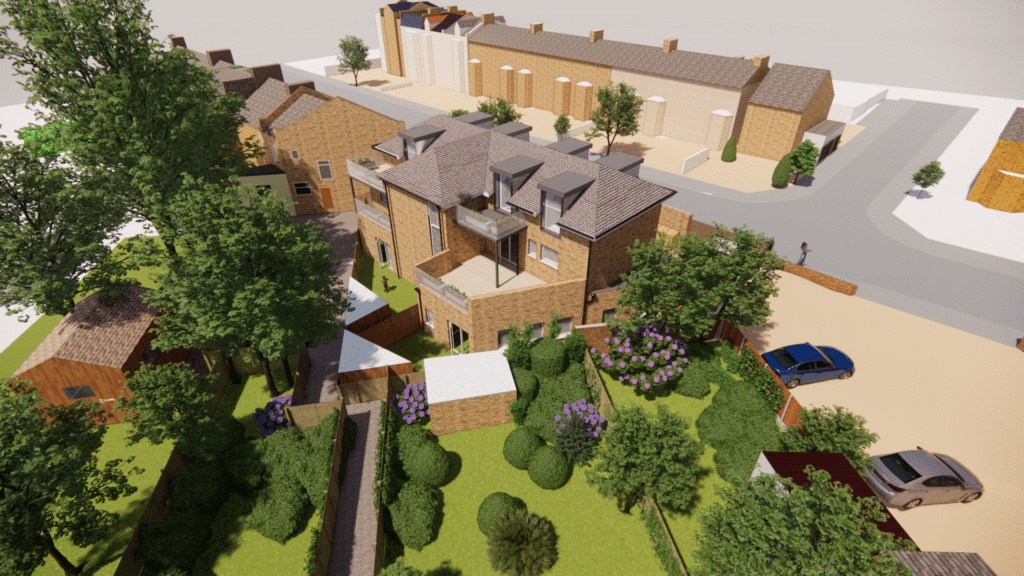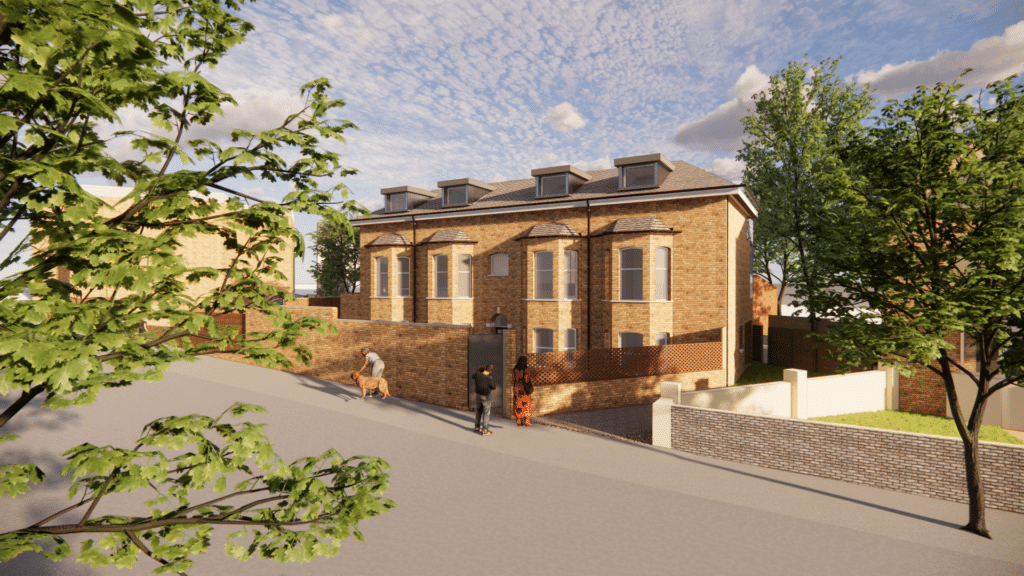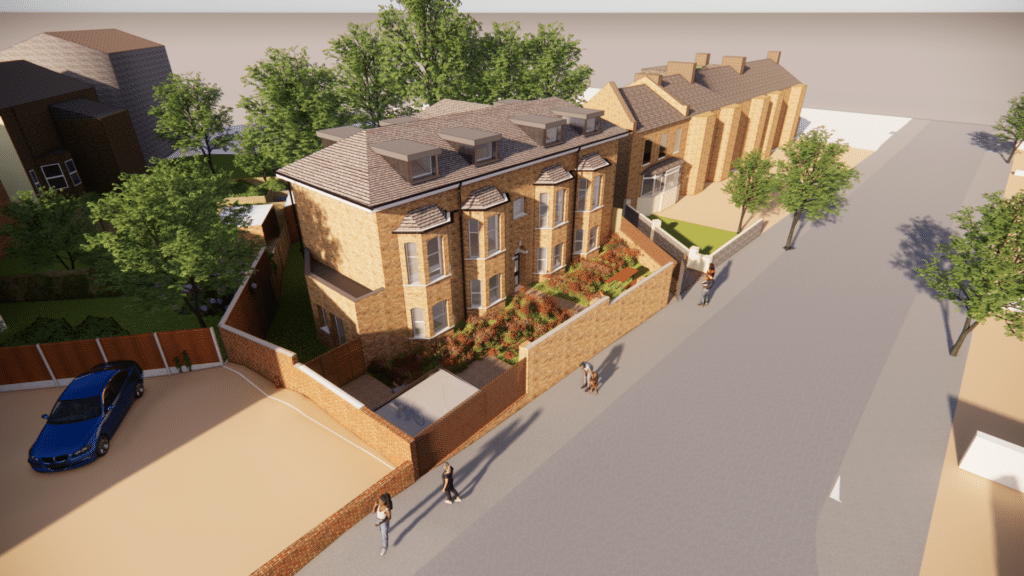07.27.2023 Britain’s housing crisis: How to make the most of awkward disused plots
July 27, 2023
Britain is in the grips of a housing crisis and it’s time we got creative to help solve this growing problem. We need to start looking seriously at underused land and awkward plots to ease the pressure. And a great example of how this can work is our Wallwood Road project that is currently in with the planners.

Yes, this is a private land owner and no, the properties are not for social housing, but that does not mean that it cannot make a valuable contribution to providing housing and clearly demonstrate the merit of developing plots that people would normally overlook. The site in Leytonstone, East London was previously an underused builders’ yard that was too small and in the wrong place. It was no longer fit for purpose. As a result, it presented a great opportunity to show how to use a less conventional space for creatively designed new homes.
Architects need to be bold to maximise potential
The plot is quite small – just 450metres in total – and is a very unusual shape because it had been cobbled together by buying sections of land from the properties facing the street. Another complication was that the front of the property needed to ‘complete’ the existing Edwardian terrace, so it could not stick out too far at the front and had to respect the Edwardian vernacular. But we were given much more freedom out the back and this is where the design really comes to life.
To the front, the property looks like two Edwardian houses with the traditional bay windows. The property is in fact one building that houses four flats, each with their own individual design. This was made possible by the work done to the rear of the property. Here we have incorporated interesting angles and shapes and played with the levels to carve out unexpected internal spaces and outdoor areas for each of the flats, making them all exciting in their own right, despite the tight plot.
During the Victorian and Edwardian eras, all the design flourishes were given over to the front of the house (with the backs of these properties often very unattractive). Here, the front elegantly matches its older neighbours but outshines them design wise at the back. Without impacting the neighbours’ outlook or the vernacular of the street, the property is still a bold design statement.
Sustainability needs to be a core consideration
What’s more, one of the ground floor flats is fully wheelchair accessible and all the flats meet stringent energy saving criteria – we’ve pulled Edwardian design into the 21st century. There are triple glazed windows and mechanical heat recovery systems to substantially reduce energy usage and make these flats all much more economical to run long term. We’re installing high efficiency air source heat pumps with underfloor heating and LED lighting throughout.
At present, building regs dictate that designs now need to achieve a 35% reduction in CO2 emissions over the so-called Part L1 2021 Target Emission Rate…..our design achieves a 61% reduction. The project not only shows how it’s possible to bring strong design credentials into a tricky plot but to do so in a way that is gentle on the planet too.
This is a modest development on a comparatively small plot. But what it lacks in size, it more than makes up for in design acumen and potential. It clearly demonstrates that if we think creatively, we can collectively and sustainably make the most of Britain’s disused plots of land and help ease today’s mounting housing crisis.


